
How Hospitals Can Use RTLS to Save Time, Money, and Improve Care
Project Case Studies | August 24, 2021 | The Lighting Exchange
The need to track people and assets has recently taken on new significance in the healthcare industry. With violent incidents, equipment theft, and trespassing on the rise, building security has become a top priority among hospital executives.
Then there is the need to optimize the patient experience in an age where many hospitals must compete for the business of savvy healthcare "consumers." Time spent with patients is crucial to predicting patient satisfaction, so nurses can scarcely afford to waste time searching for lost equipment. Neither can providers afford to waste money renting or replacing misplaced assets.
Enter Real-Time Locating Systems (RTLS), which solve all these pain points and more.
What is RTLS?
While relatively new technology, RTLS has existed long enough to prove its value in healthcare applications; healthcare facilities first began using RTLS in the 1990s. Government and military agencies have been using the technology for even longer.
Akin to an "indoor GPS," RTLS utilizes a network of connected sensors and tags to track the exact location of any tagged asset (or person). With the Trellix Smart Spaces IoT Platform, these sensors are part of a connected lighting system and perfectly positioned to gather signals from above. The sensors transmit data to applications that display the exact location of each tag within a building.
Benefits of Real-Time Location Systems in Healthcare
The business case for healthcare organizations investing in RTLS could hardly be more compelling. For one thing, RTLS saves time. A Nursing Times survey revealed that one-third of nurses spend at least an hour per shift searching for equipment. Imagine the impact on patient experiences if that time was spent by their sides instead! Then there is the potential impact on the bottom line. Many hospitals report equipment utilization rates of less than 50%, below the industry standard.
Besides the immediate time and money-saving benefits are the powerful capabilities that rich RTLS data can unleash, helping healthcare facilities optimize, improve, and rise to future challenges.
Using RTLS to Locate Equipment and Assets
Any asset or person with a tag can be located in real-time using RTLS. When medical equipment is tagged, nurses and caregivers can use an app like Trellix Locate to view assets' location within the building's floor plan, saving countless hours searching. And, since every second counts in a medical emergency, the ability to quickly locate equipment can even save lives.
RTLS can also help ensure that valuable equipment doesn't leave authorized areas, helping to minimize theft and provide more control over capital equipment and inventory. The Trellix application suite, for example, allows users to set up custom boundaries (or "geofences"), rules, and alerts.
Using RTLS to Locate People in Hospitals
The first use case for using RTLS to locate people in hospitals is simple: it's an ideal way to locate patients' movements to ensure their safety, a function that's particularly useful when treating Alzheimer's or dementia patients. Facilities can also provide staff with tags (typically wristbands or badges), so they can quickly locate people when their assistance is needed in an emergency. To boost hospital security, some facilities even require every hospital visitor to wear an RTLS tracking badge.
Over time, the process of locating people with RTLS generates a goldmine of valuable data that can enable any number of improvements, from optimizing patient flow and diagnosing bottlenecks to enabling faster contact tracing and bolstering infection prevention initiatives.
Unlocking Even More Value Using RTLS
While RTLS systems deliver almost immediate value and ROI, the data harvested by such systems can be invaluable. Systems like Trellix are designed to integrate seamlessly with third-party applications via secure, industry-standard APIs, allowing developers to connect, innovate, and optimize operations in countless ways.
Other News Content by:
Cooper Lighting Solutions
Understanding Melanopic Lighting for Improved Indoor Environments
Project Case Studies | October 16, 2025 | Cooper Lighting SolutionsLight Up the Game: Municipal Courts Shine Brighter with LED Upgrades
Industry Topics | October 02, 2025 | Cooper Lighting SolutionsCooper Lighting Solutions to Expand Industrial Lighting Portfolio with Nemalux
Press Release | September 26, 2025 | Cooper Lighting SolutionsCooper Lighting Solutions Recognized for 15th Year in IES Progress Report, Showcasing Six Lighting Innovations for 2025
Press Release | September 18, 2025 | Cooper Lighting SolutionsUpgrading Your Commercial Space: A 5-Step Guide
Industry Topics | August 21, 2025 | Cooper Lighting Solutions
